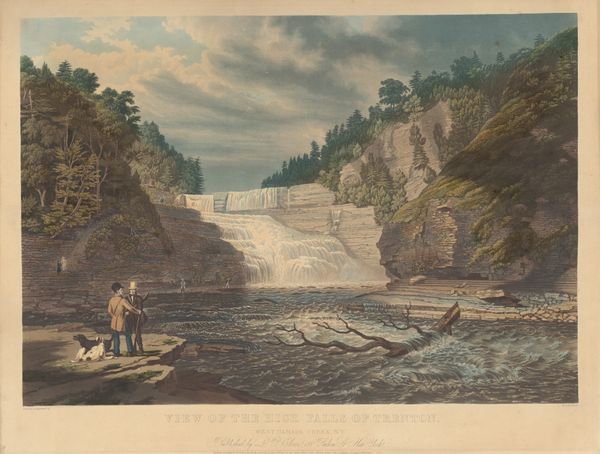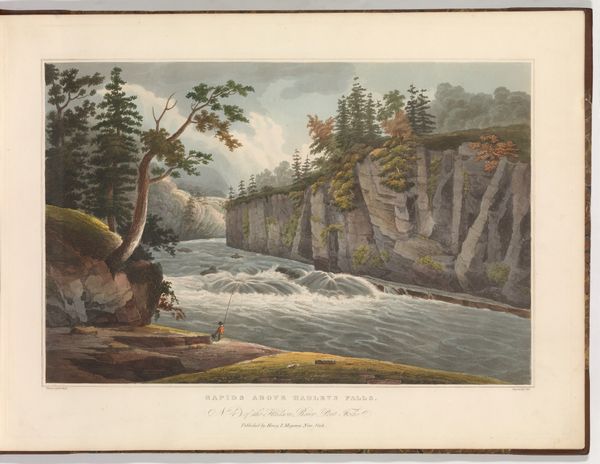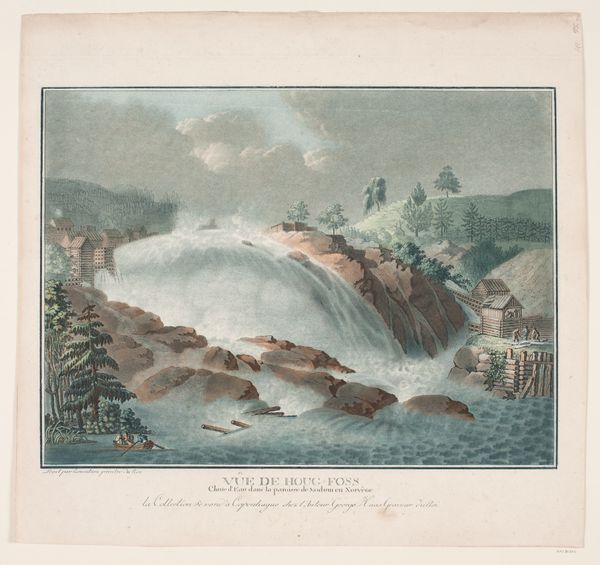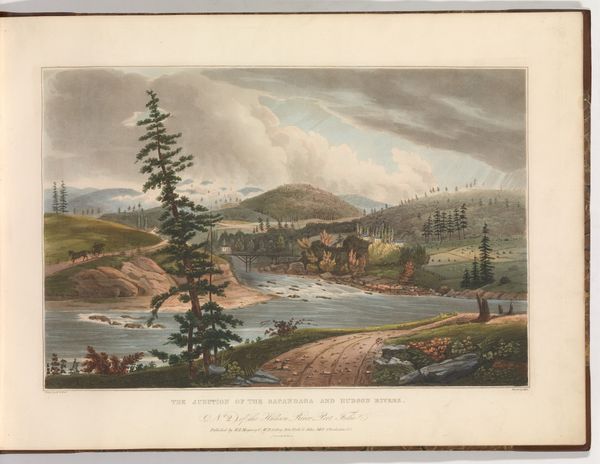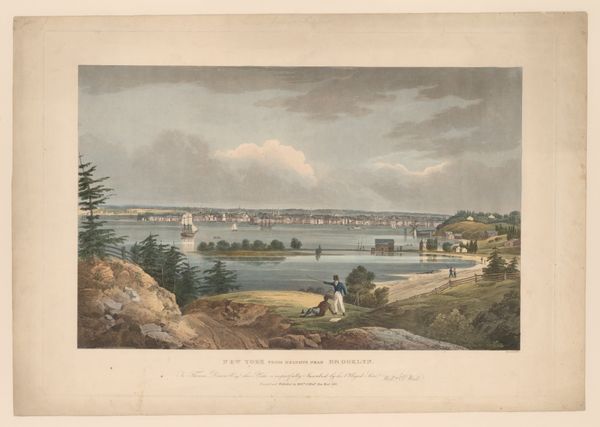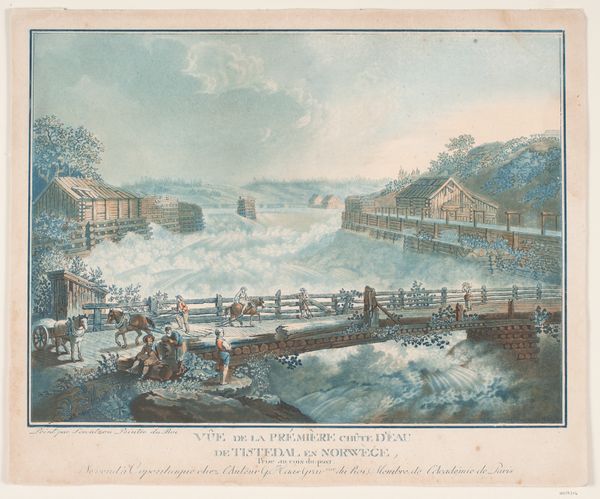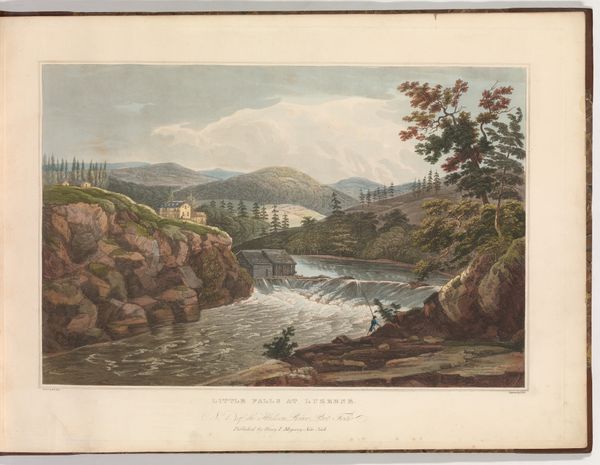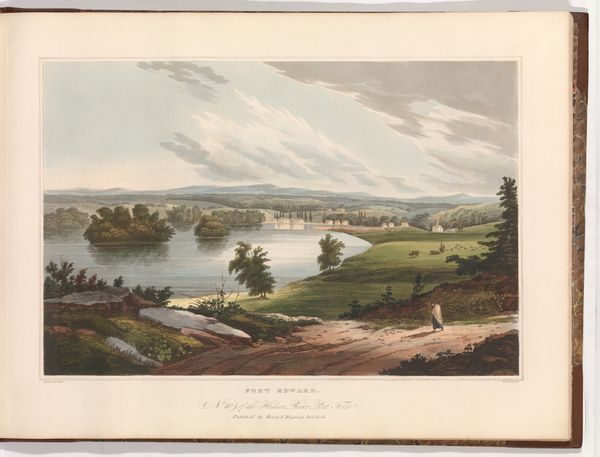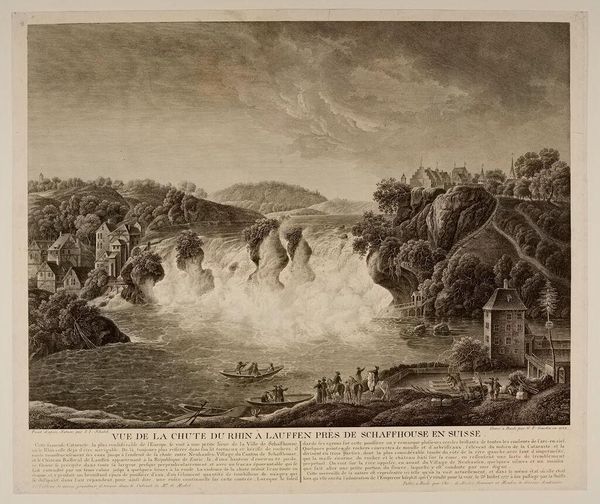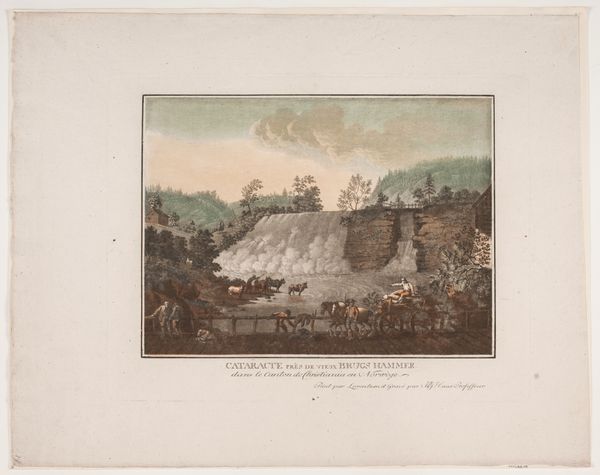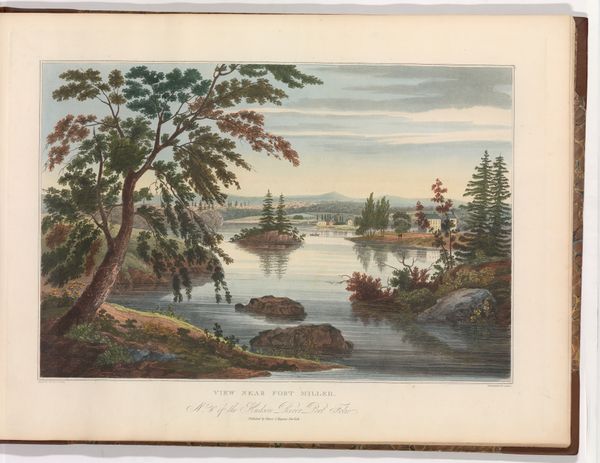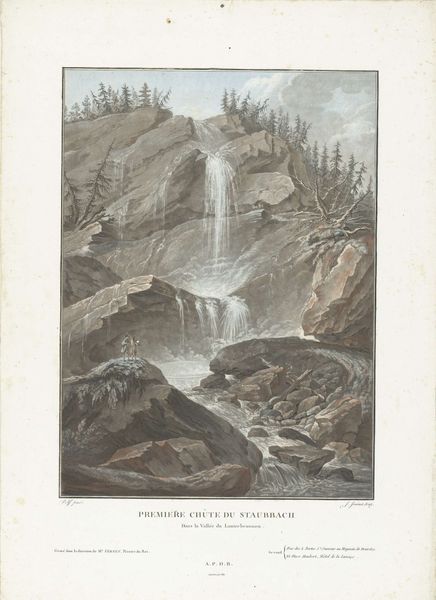
print, watercolor
# print
#
landscape
#
watercolor
#
romanticism
#
hudson-river-school
#
cityscape
Dimensions: sheet (trimmed within plate mark): 52.3 x 65.2 cm (20 9/16 x 25 11/16 in.)
Copyright: National Gallery of Art: CC0 1.0
Editor: This watercolor print, "Niagara Falls from the Table Rock," possibly dates back to 1840, attributed to William James Bennett. I'm struck by the contrast between the immense waterfall and the tiny figures observing it. How would you approach analyzing this work? Curator: As a materialist, I'm drawn to the process by which this image was created. Watercolors and prints allowed for mass production, making landscapes like Niagara Falls accessible to a wider audience. This intersects with ideas about consumption, doesn't it? People were buying into an idea of nature and the sublime, repackaged for the market. How do you think the availability of images like this influenced the perception and treatment of the actual landscape? Editor: That's a really interesting point. It almost commodifies the experience. So, were these prints aimed more towards tourists? Curator: Absolutely! Think about the social context: the rise of tourism and leisure travel. These images fueled a desire to visit, contributing to the exploitation and transformation of the site itself. We see that continuing today in other regions. The industrial production of these landscape prints mirrors the larger industrial forces changing the landscape. It raises questions about our relationship with nature, mediated through commercial interests and the making of art. Editor: So, by examining the materials and how they were distributed, we can learn about the economic forces at play in how people experience nature. Curator: Precisely. It shifts the focus away from simply aesthetic appreciation towards understanding the socio-economic machine that created this image and the implications for environmental and social change. What might seem to be just a lovely scene is embedded within something larger than it. Editor: I see how looking at it through the lens of production and consumption gives it so much more meaning! Thanks! Curator: My pleasure. I'm also thinking about ways we consume images today on our phones. What's the difference in making now from 1840? A lot.
Comments
No comments
Be the first to comment and join the conversation on the ultimate creative platform.

